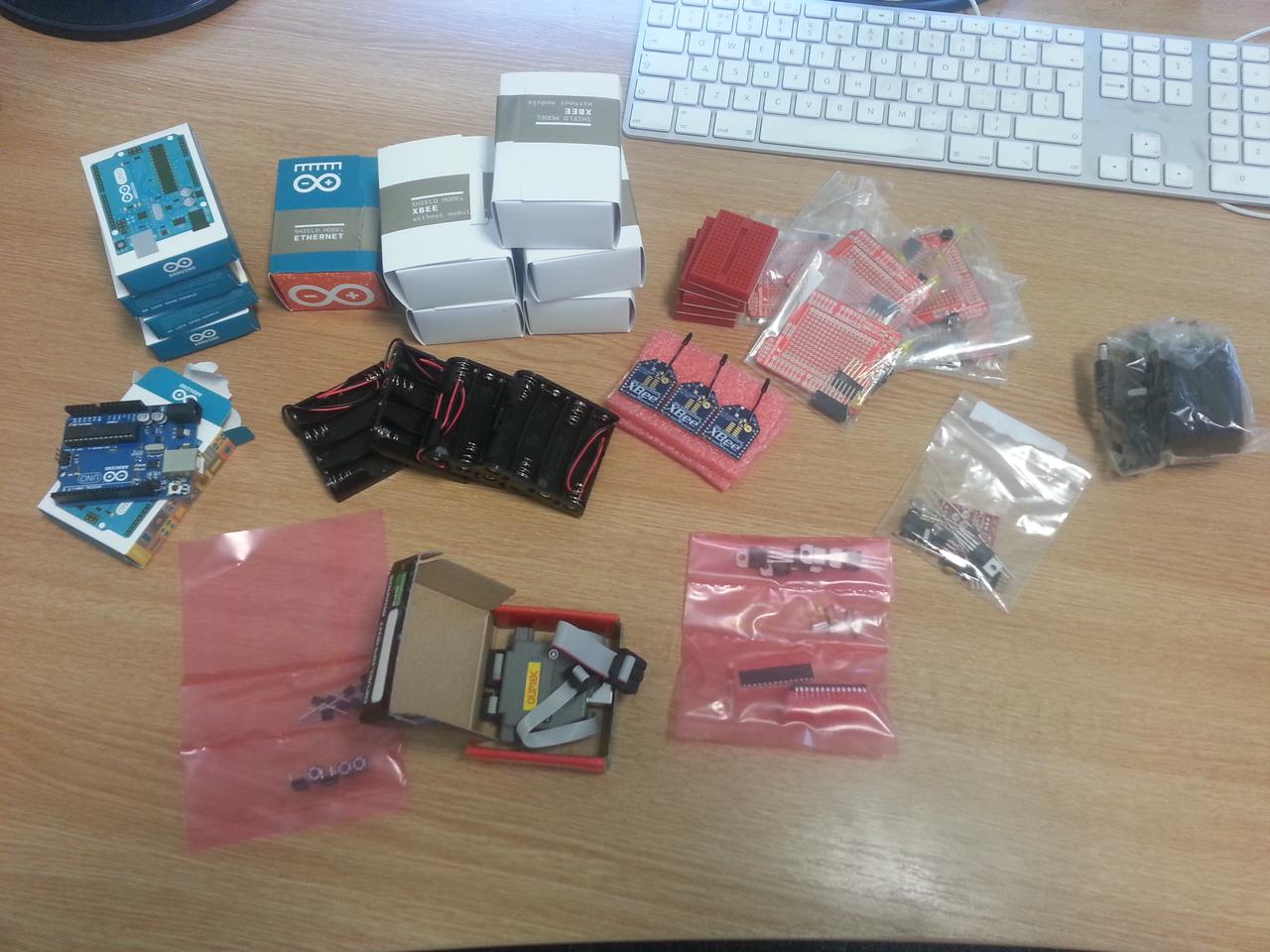Posted on Sunday 23 June, 2013
The parts have arrived for the ditch project.
The first tranche of hardware came (in a small box) today:

There are parts here for four sensor packages and a base station. The sensor nodes have an Arduino, a 2mW XBee radio, and a digital temperature sensor. The base station has an XBee and a wired ethernet for connecting up to the internet. There are also some prototyping shields to simplify integration, a wall wart power supply for the base station, and some other goodies to support some other development.
The initial design for a sensor mote puts three temperature sensors together with an Arduino and short-range radio module. The following is the parts list for a single sensor mote: